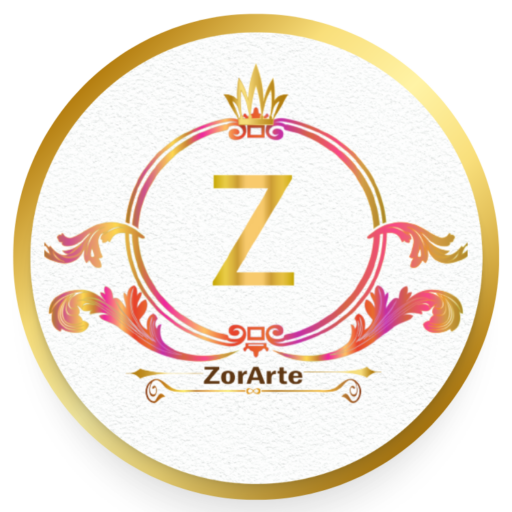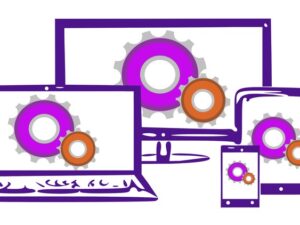Complete WordPress Theme Developer Course With Bootstrap
- Description
- Curriculum
- FAQ
- Reviews

If you ever wanted to build a complete WordPress theme, this course is perfect for you. Not only do we provide over 20 hours of instruction building themes; we provide advanced topics that will make your theme more popular that also gets approved faster by the WordPress theme review team including:
- Set up your ideal development environment including PHP, MySQL, and more
- Build sections, panels, and controls for the WordPress customizer
- WordPress coding best practices
- Automatically recommend and/or require page builders with your theme
- Use version control (the basics) to make sure your theme development is a smooth process
- Create a theme that follows coding best practice and standards
- Develop a complete theme from a static responsive theme from scratch
- Make your theme compatible with WooCommerce
- Display posts quickly with the WP REST API
- How to earn revenue from your themes, how much to charge for your themes and which websites are the best marketplaces for your themes.
- Package page builders and other plugins with your theme from WordPress, Guthub or in a separate director
- Version control of your themes using Git and Github
COMING in MAY AND JUNE 2017: BOOTSTRAP-THEME-MANIA!…We will build a Bootstrap theme as part of all of the concepts taught in this course!
You can already see the Static Bootstrap theme in section 22. We are still creating that brand new theme, you can follow along. We upload videos for this new section a little at a time.
-
2Tools
This lecture shows what tools are needed to use develop themes.
-
3Downloading and Installing WordPress Onto Our Local Server
-
4Setting up our PHP Environment
Since PHP is the open-source web development language behind WordPress, we show how to set it up for any development environment.,
-
5Creating a blank MySQL database
All WordPress websites store data in their MySQL tables, so this lecture shows you how to set up and configure your database.
-
6Getting Dummy Content To Shape Our Theme
Developing a website and theme with no data is a challenge. This video shows you how to get temporary content for your posts and pages using the Shortcode Ultimate plugin.
-
7Project: Create 3 posts and pages with Dummy Content
If you have installed the Shortcodes Ultimate plugin from the last video, this project provides more practice adding temporary content to your posts and pages.
-
8One Additional Plugin for Dummy Content
One of the best plugins out there in the WordPress plugin repository for populating your website with fake content and images which includes options for taxonomies and users.
-
9Creating a Name and Description
We want to create a theme that WordPress users can easily find and use in their theme selection screens. Make your theme stand out with the advice from this lecture.
-
10Creating Our Theme Folder
This lecture shows where to place our theme files in the WordPress file structure.
-
11Creating our First Theme File
The style.css file is the heart of your theme. Without it, WordPress would not display your theme in users.
-
12Creating Our Theme's Screenshot
Your theme's screenshot is important when identifying it to users. This lecture shows you everything from sizing your screenshot to naming it. Attached is a resource for your theme's screenshot. Open it in Adobe Photoshop and use measure its width and height as explained in the lecture.
-
13Review of the Category Hierarchy Structure
Learn the hierarchy of the category system.
-
14Identifying Your Theme To WordPress
Test your knowledge when it comes to identifying your theme to WordPress.
-
15Starting our WordPress theme with Simple HTML5 and Starting Index.html File
In order to start our journey to coding a theme, we need to build its skeleton which will make the complete structure of our theme and what people see when they visit any WordPress website using your theme. All themes start with HTML5 and CSS, so we will start with this technology and work PHP into our theme as we progress through each lecture.
Also available in the Resources section is the complete theme after all the following lectures are completed so you can check your work against the code entered into the videos.
-
16Introducing Bloginfo()
bloginfo() is the most powerful WordPress function. It allows developers to immediately pull up information including the directory of your theme, your site/blog title and more. In this lecture, I will explore the most important parameters that are accepted by bloginfo() and what is returned that has great value to themes and theme developers.
-
17Creating Our Header
WordPress themes have a header that contains your HTML prolog section and can store anything from <HEAD> to <TITLE> to various HTML5 tags.
-
18Creating Our Footer
Your footer is the feet of your theme. Seriously, it contains valuable information needed for WordPress to perform certain functions as well as display the usual footer information like the copyright messages.
-
19Creating Our Sidebar
The sidebar is famous in WordPress for its collection of widgets that users can add from the back end. Although most people recognize the sidebar as a simple column of HTML elements, sidebars can be added to any part of your theme.
-
20Creating Custom Template Tags
All WordPress themes use template tags and adding them to YOUR theme is essential. I explain where to add them and which ones to use. There are hundreds of template tags provided that allow theme developers to display necessary information from blog posts, pages, authors, etc.
-
21Review of the Sections That Help Build Our Theme
We show a quick review of all the sections mentioned in this section and how to put them all together.
-
22Building Our Theme
Test your knowledge of the files required to build your theme.
-
23Displaying Posts
Posts are the building blocks of any blog. They are simple articles and are the first thing that bloggers see when they write on their blogs from the WordPress back end, so coding the necessary pages is important.
-
24Displaying Pages
Pages are like the brother of posts. They are similar to posts except they serve a different purpose. Pages act like web pages whereas posts are used to serve as articles written by bloggers.
-
25Two Options On Creating A Custom Post Type For The Next Video
In the last video, we left off where I was going to show you how to create a custom post type, which is necessary for the NEXT video. In the next video, we have a custom post type called "countries" for different countries.
Now, here in this special video, I give you 2 options on creating a custom post type:
- You can install the plugin that is demonstrated in this video where I show you in a very simple way how to create the countries custom post type.
- You can watch the detailed videos in section 11 of this course.
The details are in this 6-minute video.
-
26Adding Permalinks and Publish Dates
Displaying the permalink is important for SEO and links to any page or post. Since blog posts are dated, displaying the published date is a normal feature of blogs. In this lecture, we learn how to display both.
-
27Display Random Posts
To vary our blog, sometimes a blogger wants to display a random post. We learn how to do that in this lecture.
-
28Review Plus Ordering Posts in Ascending and Descending Order
Let's review how to display pages and posts and their different features. Also, I add a section to this review where we order the posts in ascending and descending order.
-
29Coding Quiz: Pages and Posts
Look at the code and determine what it does.
-
30Developing Our Posts Template (Part 1 of 3)
This is the first part in a 3 part lecture where we teach single.php: We start working with the inner page template that displays posts and learn how to display various types of data along with those posts.
-
31Developing Our Posts Template (Part 2 of 3)
Part 2: We start working with the inner page template that displays posts and learn how to display various types of data along with those posts.
-
32Alternative Way Of Displaying Post Content
Theme developers have options when displaying post data and pages. In this lecture, we present an alternative.
-
33Developing Our Posts Template (Part 3 of 3)
We conclude our 3-part lecture in displaying WordPress posts.
-
34Developing Our Default Page Template
If your theme includes WordPress pages, this lecture teaches how to format and display pages.
-
35Developing Variant Page Templates
Page templates can be formatted in various ways including, but not limited to:
- half-page with a right sidebar
- half-page with a left sidebar
- full page with no sidebar.
We teach you how to create those types of pages and how to display them in the templates menu.
-
36Developing Our Comments Template
Blog posts would not be complete without the ability for readers and subscribers to comment. We teach you how to add a comment template to your post pages.
-
37Review
Let's review how to display posts and pages with this quick Powerpoint presentation.
-
38Displaying WordPress' Default Search Form
Search results are the cornerstone of any website with lots of data. Instead of the usual HTML form, we tap into the WordPress-way of displaying a search form. We teach the default and simple way of creating a search form that can be added anywhere in your theme.
-
39Customizing Our Search Form
From the last lecture where we taught how to add a search form, this lecture picks up where it left off and shows you how to customize the search form to create an endless combination of forms.
-
40Starting Our Search Results Template
Search forms do not have use without search results. In this lecture, we start our template that allows us to display search results.
-
41Adding Our Search Results Loop
In this lecture, we teach you how to add search results with any keyword entered into the search form using the famous have_posts() loop.
-
42Add Featured Images To Search Results
Since the featured image makes any WordPress post come alive and allows us to bread the post, we apply this trick to search results.
-
43Adding Authors To Search Results
For WordPress websites with multiple authors, this lecture shows how to add the author's name to search results.
-
44Developing Our Initial Category Template
Known as taxonomy, categories and tags are excellent for organizing posts and pages. In this first lecture for this section, we explain how to set up the initial category template.
-
45Review of the Category Hierarchy Structure
Categories have a hierarchical structure and sometimes, you may need to display several categories and their children (subcategories) at the same time, so we teach you how to display the entire hierarchy here.
-
46Adding The Conditional Category Tag
WordPress has many wonderful conditional tags that themes can take advantage of. We teach you how to add the let WordPress decide if a post has a certain category and how to program for it.
-
47Developing Our Initial Tag Template
Tags are the siblings of categories in the taxonomy family. As theme developers, we show you how to create a template to display them.
-
48Creating a Tag Cloud
A collection of tags is known as a tag cloud. They are a group of hyperlinks formatted by size depending on how many posts use them. We teach you how display the tag cloud.
-
49What Is Theme Support
Theme support is important in helping WordPress admins do everything from:
- displaying thumbnails (featured images)
- custom fields
- menus
- and more
In this lecture, we teach you the basics of theme support.
-
50Overview of add_theme_support()
This function is the key to adding theme support and we show you how to use it completely to make your theme versatile.
Tip: The more theme support your theme offers, the more popular it will be.
-
51Adding HTML 5 Markup Support
In today's world of web design, HTML5 is all the rage and WordPress offers HTML5 support with the information presented in this lecture.
-
52Theme Support Only For The Admin
Learn how to add theme support only for the administrator.
-
53What Are Theme Locations?
Theme locations are places in your templates where menus can be added. Learn how to add them in this lecture.
-
54Creating Our First Theme Location
In this video lecture, we create our first theme location.
-
55Displaying Our Menu
Once our theme locations are completed, we can add our first menu.
-
56Adding Our Other Menus
Our themes are not limited to just one menu. In fact, the more, the better.
-
57Menu Placeholders
Menus have placeholders. We teach you in this lecture how to add them.
-
58Submenus and Menu Depth
Menus have the ability to contain submenus and we display them here.
-
59Creating A Post Type
A custom post type is a special type of post which has its own taxonomy and other features. Modern themes come with custom post types, so learn how to create them here and distribute them with YOUR theme.
-
60Adding Taxonomies
When you create a custom post type, it is best practice to include a few initial taxonomies with it.
-
61Adding Custom Field Support
Custom post types are more versatile when they allow administrators to add custom fields. Add support with the skills in this lecture.
-
62Supporting Featured Images
Like regular posts, custom post types also support featured images , if your theme supports them. Learn how to support featured images here.
-
63Displaying Custom Post Types
Post types are any post that has a different purpose than regular posts. Various plugins help bloggers create custom post types, so in this lecture, we learn how to loop through and display custom post types when a blogger needs them.
-
64Introducing the Theme Customizer
The customizer is the newest way for administrators to customize their WordPress sites. Learn how to add a customizer here.
-
65Customizer Sections & Controls
Customizers come with sections and form controls. Learn how to add them here.
-
66Displaying Customizer Data (Part 1)
Customizer controls are paired with data called "settings". Learn how to add settings and bind them to each control. This is part 1 of a two-part video lecture. Part 2 will be released by Thursday, July 15, 2016.
-
67Displaying Customizer Data (Part 2)
-
68Colors From 3 Different Controls
One of the most popular types of customizer controls are the color control. Learn how to add them here along with other alternatives.
-
69Project: Restaurant Menu
In this project, we add a section in the customizer section of restaurant settings.
-
70Project: Restaurant Google Map
In this project, learn how to create a Google map using the customizer.
-
71Project: Restaurant Hours of Operations (Part 1)
This first part in a two part project shows you how to add hours of operations for a restaurant.
-
72Project: Restaurant Hours of Operations (Part 2)
This second part in a two part project continues our skill set on adding hours of operations for a restaurant.
-
73Panels
Panels organize sections. Learn how to create them here and how to add customizer sections to them.
-
74Active Callback (Part 1)
This cool feature teaches you how to use active callback functions with your customizer, Part 1 of 2.
-
75Active Callback (Part 2)
This cool feature teaches you how to use active callback functions with your customizer, Part 2 of 2.
-
76Image Uploads
Image uploads are another type of control of the customizer.
-
77Conclusion & Project
Let's recap what we learned about the customizer with a project.
-
78Customizer
The customizer is huge. Test your knowledge regarding the coding of it?
-
79Intro to Page Builders
Page builders are very popular and modern themes come included with them. Learn the basis of page builders and why they are so important for distributing with your theme.
-
80TGM Plugin Activation
The TGM plugin is the most popular way to include any plugin with your theme. In this lecture, we teach you how to work with it.
-
81Adding Our Plugins
We go into the details of including plugins using the TGM Activation plugin.
-
82Project: Find Page Builders
There are so many page builders today. We go over the most popular ones in this lecture.
-
83Pre-packaging Page Builders
In this lecture, we teach you how to pre-package page builders using TGM Activation.
-
84Including Page Builders and TGM Activation Plugin
test your knowledge of including page builders and distributing them with your theme.











